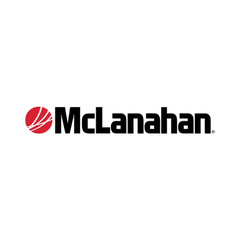The information below has been supplied by dairy marketers and other industry organizations. It has not been edited, verified or endorsed by Hoard’s Dairyman.

Given sand bedding’s benefits, it’s easy to take this critical cow comfort tool for granted. However, doing so increases the risk of contradicting all the good things accompanying sand bedding, like improved cow health, increased lying time and better milk quality.
“Sand quality affects the overall efficiency of the bedding, as well as how it functions in manure handling systems,” notes Renee Schrift, Director of Global Sales – Agriculture at McLanahan Corporation.
“Coarse sand negatively affects cow comfort and is abrasive on manure handling equipment,” she explains. “Fine and natural sand obtained from beaches and riverbeds may contain pebbles and other organic materials, which reduces the quality of sand. Fine sand also becomes more compact and is more difficult to recover from sand-laden manure, which creates challenges in recycling sand or sand removal prior to anaerobic digestion of manure. Additionally, fine sand can pack in stalls, reducing cow comfort and drainage.”
Best sand choice
Experts suggest purchasing concrete sand to best meet these considerations. Concrete sand is readily available in most areas and is characterized by the American Standard for Testing Materials specification ASTM C-33. It is also known as construction sand, torpedo sand or 2NS.
Unlike other sand types, concrete sand features fewer pebbles and stones to prevent injuries to cows. It also contains minimal fine material, which helps it stay loose in the stalls and prevent the growth of mastitis-causing bacteria by readily draining away urine and dripped milk.
Recycled sand savings
Economics drive recycled sand’s advantage. With the right sand and a properly designed and managed sand separation system, most farms achieve much greater than 90% sand recovery rates.
These solutions allow you to recycle and reuse sand bedding, offering significant savings on purchase costs over time. Sand removal also lowers the cost of storage facility cleanouts and keeps sand out of fields and under cows where it’s most useful.
This chart illustrates, sand recovery carries significant economic weight. At $15 per ton, recovering and recycling 90% of sand adds up to $205,313 annually for a 1,500-cow dairy.

Mining-duty equipment specifically engineered for dairy farm conditions helps better manage sand-laden manure and harvest sand. These investments help extend the life of manure system components, reduce downtime and lower maintenance costs.
Anaerobic digester implications
For sand-bedded farms investing in anaerobic digester technology, sand removal from manure is a must. This need also drives the need to remove as much sand as possible from manure. If you bed with sand and integrate an anaerobic digestion system, sand recovery as near to 100% as possible is desired.
“It may take several steps, including mechanical sand separation, a hydrocyclone and a sand lane or other tools to remove the maximum amount of sand from manure before digestion,” notes Schrift.
However, the ability to deliver nearly sand-free effluent to the digester is essential for success.
“Choosing the best sand, combined with the right manure handling equipment, can make all the difference in ensuring efficient manure management that serves your herd and your team, not the other way around,” she concludes. “This holds true for farms with and without anaerobic digesters.”
To learn more about sand choices, separation and recycling to elevate manure management, visit //mclanahan.com/solutions/dairy.
About McLanahan
Headquartered in Hollidaysburg, Pa., USA, McLanahan Corporation offers over 185 years of experience in providing processing solutions to a variety of materials handling industries. Today, McLanahan’s operation includes offices in Asia, Australia and Asia Pacific, Europe, Latin America, MENA and North America, and it is supported by a strong network of dealers and partners around the world. For more information, contact sales@mclanahan.com.






